

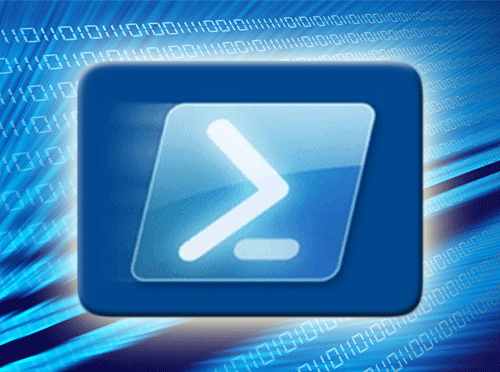
Microsoft’s PowerShell is a powerful command-line interface (CLI) and scripting language. However, it helps to have some GUI-based tools and utilities to make using PowerShell a bit easier.
You can use script editors with code-completion features to help quickly find commands and attributes with debugging features to check syntax and run your codes and scripts. We’ll introduce a few of these editors today as well as a few other tools you might find useful.
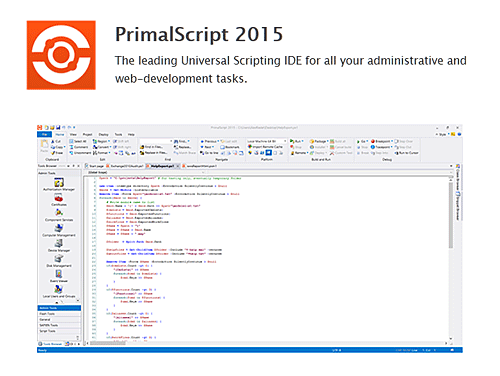
PrimalScript is a powerful commercial scripting editor that’s first debuted in 1998. It supports PowerShell, VB Script, JavaScript, and over 50 other languages.
PrimalScript includes some advanced functionality such as debugging scripts on remote machines, code-completion features, and support for the use of .NET or COM objects in the PowerShell or ActiveX language code, and the PrimalMerge component allows you to compare and merge files and folders, supporting VBScript and PowerShell color coding.
The 2012 version includes GUI improvements, adding a new ribbon-based user interface that tries to simplify accessibility to important functions. There’s also new functionality, like the changed line indicator and shortcuts for moving to the next/previous changed line.
Plus, the new release also adds native PowerShell remoting from within PrimalScript, an advanced object browser that differentiates between 32- and 64-bit cmdlets, a more powerful debugger with tracepoints, and remote PowerShell debugging.

Admin Script Editor (ASE) was previously a commercial product but is now offered for free, although further development has ceased. ASE provides a set of tools useful for creating and editing scripts in PowerShell, VBScript and other scripting languages.
Admin Script Editor offers a graphical form designer, wizards to help build code, an integrated debugger to identify issues with scripts, and support for drag-and-drop code authoring. Its ScriptForm Designer enables you to create custom dialogs for your scripts, and the ScriptPackager feature can generate executables for deployment.
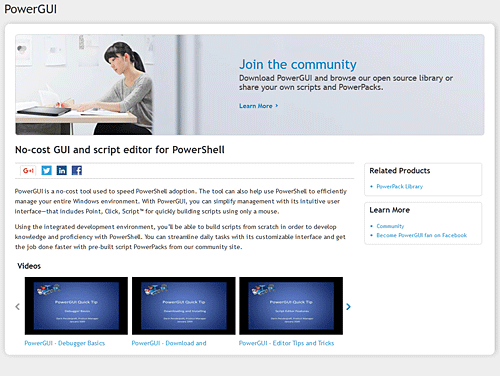
PowerGUI is a free PowerShell-based computer and network admin console offering script editing and debugging features.
Now available through Dell, PowerGUI has a MMC-like GUI and by default lets you browse Active Directory, Network, Exchange 2007, and Local System stats/settings with the ability to customize the results and to add more component types via what they call PowerPack add-ins.
The script editor features instant command and attribute help as you type, has code sniplets, includes debugging, and has integrated online code searching via www.poshcode.org.

PowerGadgets is a commercial product, available as part of the Studio FX Premium Subscription, that offers a platform to generate reports and status gadgets powered via PowerShell. You can track data from WMI, Exchange, SQL, Windows Registry and more. You can use their graphical wizards and templates to generate charts, gauges, and maps, all without the need for any coding.
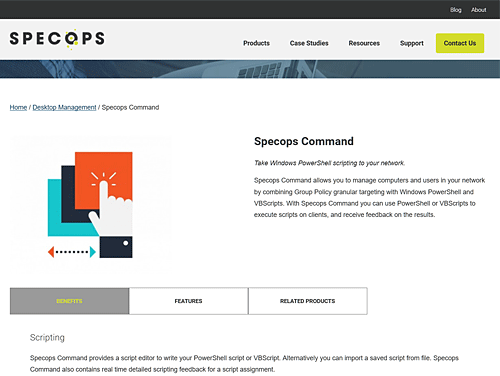
Specops allows you to execute PowerShell and VBScript on remote machines via Group Policy as the delivery mechanism. You simply input the script and set a target, and once it’s executed on that local machine it will provide a report on how the script actually performed. It supports Undo scripts and scheduling execution as well.

PowerPromptHere is a free simple but useful utility that adds a “PowerShell Prompt Here” option to the context menu of Windows. Like the “Open command window here” option when you Shift + Right Click a folder, choosing “PowerShell Prompt Here” will open up PowerShell to that particular location.
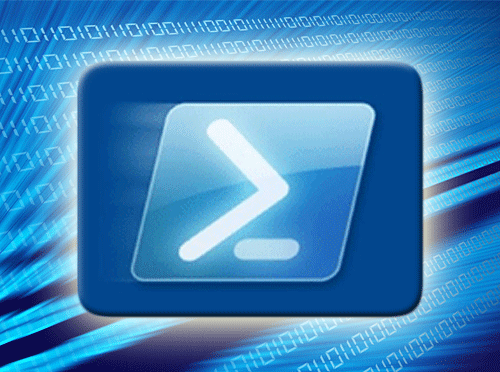
In addition to the tools discussed above, here are a few more PowerShell tutorials you may want to check out:
Using the New SMB PowerShell Commands in Win Server 2012 R2
Enabling and Using Windows PowerShell Web Access
PowerShell’s Test-NetConnection a Versatile Tool for Network Diagnostics
Discover six GUI-based scripting tools and utilities that can extend PowerShell’s functionality while helping to make it a bit easier to use.
Property of TechnologyAdvice. © 2025 TechnologyAdvice. All Rights Reserved
Advertiser Disclosure: Some of the products that appear on this site are from companies from which TechnologyAdvice receives compensation. This compensation may impact how and where products appear on this site including, for example, the order in which they appear. TechnologyAdvice does not include all companies or all types of products available in the marketplace.